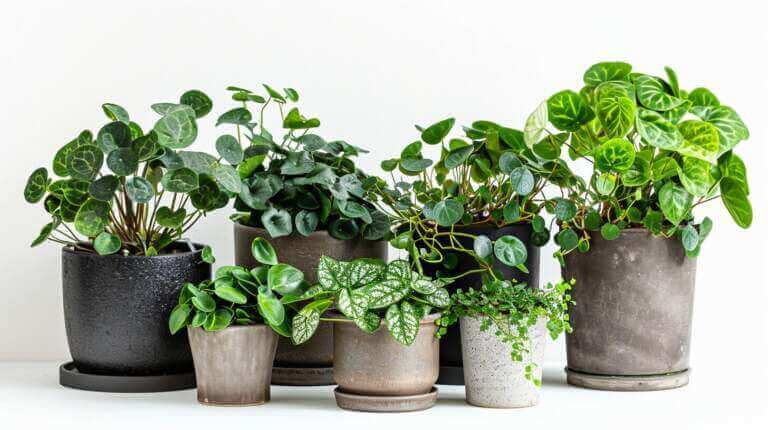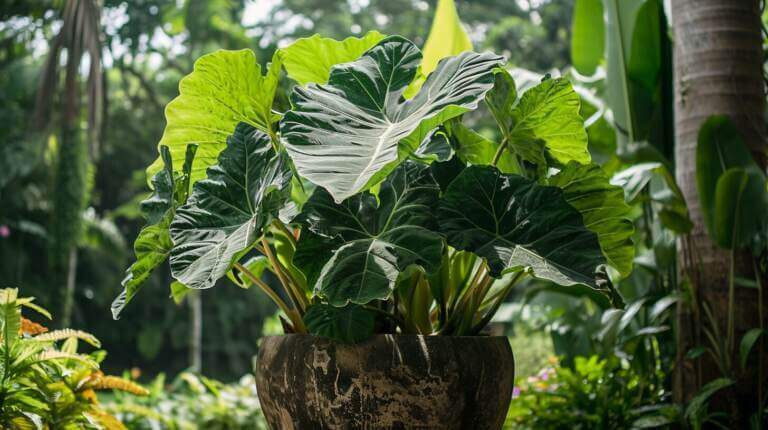Peperomia Light Requirements: Finding the Right Amount of Sunlight
Peperomia plants are native to tropical and subtropical regions where they thrive in bright indirect sunlight. As houseplants, they prefer medium to bright indirect light but should be protected from intense direct sunlight to avoid leaf burn. Supplemental artificial light can be used if natural light is insufficient. Finding the ideal light conditions for your peperomia is crucial for its growth and overall health.
Key Takeaways:
- Peperomia plants prefer medium to bright indirect light.
- Avoid exposing peperomia to intense direct sunlight to prevent leaf burn.
- Supplemental artificial light can be used if natural light is insufficient.
- Finding the right light conditions is important for peperomia’s growth and health.
- Experiment with different locations to determine the ideal spot for your peperomia.
Best Rooms To Grow Peperomia
When it comes to growing peperomia indoors, choosing the right location is crucial for its well-being. The best rooms for your peperomia indoor plants are those that provide bright indirect sunlight, which mimics their native tropical and subtropical habitats. Positioning your plants a few feet away from an east-facing window is ideal, as it allows them to receive moderate morning sun and filtered light throughout the day.
In addition to an east-facing window, a room with a west-facing window can also be suitable for your peperomia plants. Although it receives some direct afternoon light, the morning sun is minimal, which helps prevent leaf burn. To protect your peperomia from intense sunlight, you can either position it a few feet away from the window or use a sheer curtain to filter the light.
It’s important to note that finding the perfect spot for your peperomia to thrive may require some experimentation. Each plant is unique, and its light requirements may vary. Observe how your peperomia responds to different locations and adjust accordingly to ensure its optimal growth and overall health.
Table: Recommended Rooms for Growing Peperomia
| Window Direction | Light Exposure | Recommended Positioning |
|---|---|---|
| East-facing | Moderate morning sun, filtered light throughout the day | A few feet away from the window |
| West-facing | Some direct afternoon light, minimal morning sun | A few feet away from the window or protected by a sheer curtain |
Providing Supplemental Sunlight To Peperomia
If you find that your peperomia plant is not receiving enough natural light, don’t worry! You can easily supplement its light requirements with artificial light. Fluorescent high-intensity T5 bulbs are an excellent option as they provide the necessary spectrum of light for peperomia plants to thrive. To ensure consistent and optimal growth, it is recommended to keep the artificial light on for 8-12 hours per day, using a timer for convenience.
Artificial light can be a great solution for those who have limited access to natural light or for certain rooms where light is insufficient. By providing supplemental lighting, you can create an environment that mimics the ideal light conditions for your peperomia’s growth and health.
When setting up artificial lighting for your peperomia, make sure to position the bulbs at a suitable distance from the plant, usually about 6-12 inches away. This prevents the light from being too intense and causing leaf burn. Additionally, rotate the plant periodically to ensure even exposure to light on all sides.
Sunlight Needed for Growing Peperomia Outdoors
Peperomia plants can be a delightful addition to your outdoor garden during the spring, summer, and early fall. However, it’s important to provide them with the right amount of sunlight to ensure their optimal growth and health. When growing peperomia outdoors, finding the ideal location and understanding their light requirements is crucial.
Peperomia plants thrive in partial sun, receiving at least six hours of sunlight a day. An east-facing location is perfect as it provides the plant with moderate morning sun and filtered light throughout the day. This type of exposure is ideal for peperomia plants and supports their growth. However, it’s essential to protect them from intense afternoon sun and heat stress. Gradually acclimating your peperomia to the outdoor conditions over one to two weeks by exposing it to one hour of shade per day and gradually increasing the time can help prevent sunburn and ensure its successful transition.
Once your peperomia is acclimated to outdoor conditions, make sure to maintain a consistent watering schedule, taking into account the increased heat and sunlight. It’s important to monitor the moisture levels in the soil and water your peperomia when the top inch of the soil feels dry to the touch. This will prevent overwatering and root rot, which can be detrimental to the plant’s health.
| Peperomia Light Requirements Outdoors | Light Conditions |
|---|---|
| Full Sun Exposure | At least 6 hours of direct sunlight |
| Partial Sun Exposure | Filtered sunlight and moderate morning sun |
| Protection from Intense Afternoon Sun | Position the plant in an east-facing location or provide shade during the hottest part of the day |
| Acclimation Process | Expose the plant gradually to outdoor conditions, increasing the time spent outdoors over one to two weeks |
Choosing the Right Peperomia Variety for Your Light Conditions
Peperomia plants come in a wide variety of species, each with its own unique light requirements. When selecting a peperomia variety for your space, it is important to consider the available light conditions to ensure the plant’s optimal growth. Here are some popular peperomia varieties and their light preferences:
Peperomia Obtusifolia
Peperomia obtusifolia, also known as the Baby Rubber Plant, thrives in medium to bright indirect light. This variety prefers a spot near an east or west-facing window, where it can receive moderate sunlight throughout the day. Avoid placing it in direct sunlight, as it can lead to leaf burn.
Peperomia Rotundifolia
Peperomia rotundifolia, commonly known as Trailing Jade or String of Turtles, is a variety that can tolerate lower light conditions. It does well in bright indirect light but can also thrive in areas with moderate or filtered light. This makes it suitable for rooms that receive less natural sunlight, such as north-facing windows or offices with limited lighting.
Peperomia Verticillata ‘Belly Button’
Peperomia verticillata ‘Belly Button’ is a compact variety that enjoys bright indirect light. It is well-suited for rooms with east or west-facing windows, where it can receive a few hours of morning or afternoon sunlight. This variety is ideal for smaller spaces or as a decorative accent on shelves or desks.
| Peperomia Variety | Light Requirements |
|---|---|
| Peperomia obtusifolia | Medium to bright indirect light |
| Peperomia rotundifolia | Tolerates lower light conditions |
| Peperomia verticillata ‘Belly Button’ | Bright indirect light |
Common Peperomia Light-related Problems and Solutions
When it comes to peperomia plants, maintaining the right light conditions is crucial for their health and growth. However, sometimes issues can arise despite our best efforts. Some common problems related to light conditions in peperomia plants include yellowing leaves, leaf drop, and leggy growth.
Yellowing leaves can be a sign of either too much or too little light. If your peperomia’s leaves are turning yellow, it could be receiving excessive direct sunlight or inadequate light. To address this issue, adjust the plant’s location accordingly. Move it to a spot with less direct sunlight or provide supplemental artificial light to ensure it receives the right amount of brightness.
Leaf drop is another problem that can occur due to incorrect light conditions. If your peperomia is shedding leaves, it may be receiving insufficient light. Inadequate light can cause the plant to become weak and lose leaves. To solve this issue, relocate your peperomia to a brighter area or provide artificial light to supplement natural light.
Leggy growth, characterized by stretched-out stems and sparse foliage, is a common issue in peperomia plants that don’t receive enough light. When peperomia lacks sufficient light, it tends to stretch towards the available light source, resulting in leggy growth. To address this problem, ensure that your peperomia is placed in a well-lit area or provide supplemental artificial light to encourage more compact and bushier growth.
FAQ
What kind of light do peperomia plants need?
Peperomia plants prefer medium to bright indirect light but should be protected from intense direct sunlight to avoid leaf burn.
Can I grow peperomia in a room without much natural light?
If your peperomia is not receiving enough natural light, you can supplement it with artificial light. Fluorescent high-intensity T5 bulbs are a great option as they provide the necessary spectrum of light for peperomia plants to thrive.
Can I grow peperomia outdoors?
Yes, peperomia can be grown outdoors during the spring, summer, and early fall, as long as they are protected from frost. An east-facing location is ideal, as it receives partial sun for at least six hours a day.
Are there different varieties of peperomia with different light requirements?
Yes, there are numerous varieties of peperomia plants, each with different light requirements. Some thrive in medium to bright indirect light, while others can tolerate lower light conditions. When selecting a peperomia variety, consider the available light in your space and choose accordingly.
How should I care for peperomia’s light needs?
Besides providing the right amount of light, caring for peperomia’s light needs involves proper watering, pruning, and fertilizing. Water peperomia plants when the top inch of soil is dry to the touch, prune them in early spring to promote bushier growth, and fertilize sparingly during the growing season with a diluted liquid fertilizer.
What are some common problems related to light conditions in peperomia plants?
Yellowing leaves, leaf drop, and leggy growth are common problems related to light conditions in peperomia plants. Yellowing leaves can indicate too much or too little light, while leggy growth suggests inadequate light. Adjusting the plant’s location or providing supplemental artificial light can remedy these issues.







